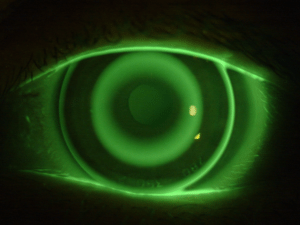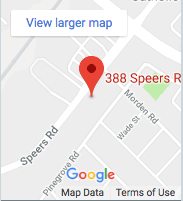 Accelerated Overnight Orthokeratology or Ortho-K for short, is the science of changing the curvature or shape of the cornea to change how light is focused on the retina at the back of your eye.
Accelerated Overnight Orthokeratology or Ortho-K for short, is the science of changing the curvature or shape of the cornea to change how light is focused on the retina at the back of your eye.
Ortho-K utilizes corneal molds that you wear at night that reshape the cornea so that you see much better and it’s considered a safer alternative to laser eye surgery.
The Nature of the Cornea
The cornea is the eye’s equivalent of a watch crystal; a clear, dome-shaped structure that overlies the iris. The tissue of the cornea is similar to clear, wet skin and like skin, it’s very pliable.
The cornea is responsible for most of the eye’s corrective power because it has a curvature that bends light toward the back of the eye and separates the eye from air and the rest of the outside world. It also contributes to various eye conditions like nearsightedness (myopia), farsightedness (hyperopia) and astigmatism.
Setting Goals
Ortho-K can improve your vision in a surprisingly short period of time, but the length of treatment time needed to reach your goals can vary from patient to patient. The following considerations can affect the speed of the treatment:
• Your initial prescription
• The rigidity of the cornea
• Tear quality and quantity
• Your expectations
Mapping Your Cornea
If you opt for Ortho-K, a few important tests must be done by an Orthokeratologist, the main one being to determine if your eyes are healthy. This special eye doctor will examine the retina and the overall health of the outside of the eye.
The next important step is to map your cornea with an instrument called a Topographer, which will show your eye doctor exactly how your cornea is shaped. It’s very similar to a topographical map of a camping area that shows its hills, plains and valleys.
Retainer Lenses
The information from your corneal mapping, the size of your cornea and your prescription for vision correction are all used to design your corneal molds, also called retainer lenses. These lenses look very similar to contact lenses.
When you pick up your Ortho-K retainer lenses, you will be instructed how to insert, remove and take care of them. The fit of your retainers will be assessed and you’ll be scheduled to be seen after you’ve worn them the first night. At that time, your doctor will re-evaluate the fit and your newly corrected vision and another corneal mapping will be done.
Throughout this initial fitting period, the Orthokeratologist will keep an eye on your corneal health and how effective the treatment is. Your retainer lens fit may need to be modified from time to time, in order for your goals to be reached.
Due to the flexibility of the cornea, patients are advised that they may need to wear their retainers every night to maintain their newly-corrected vision, but some patients are able to reduce the amount of time they wear them to once every two to four nights.

